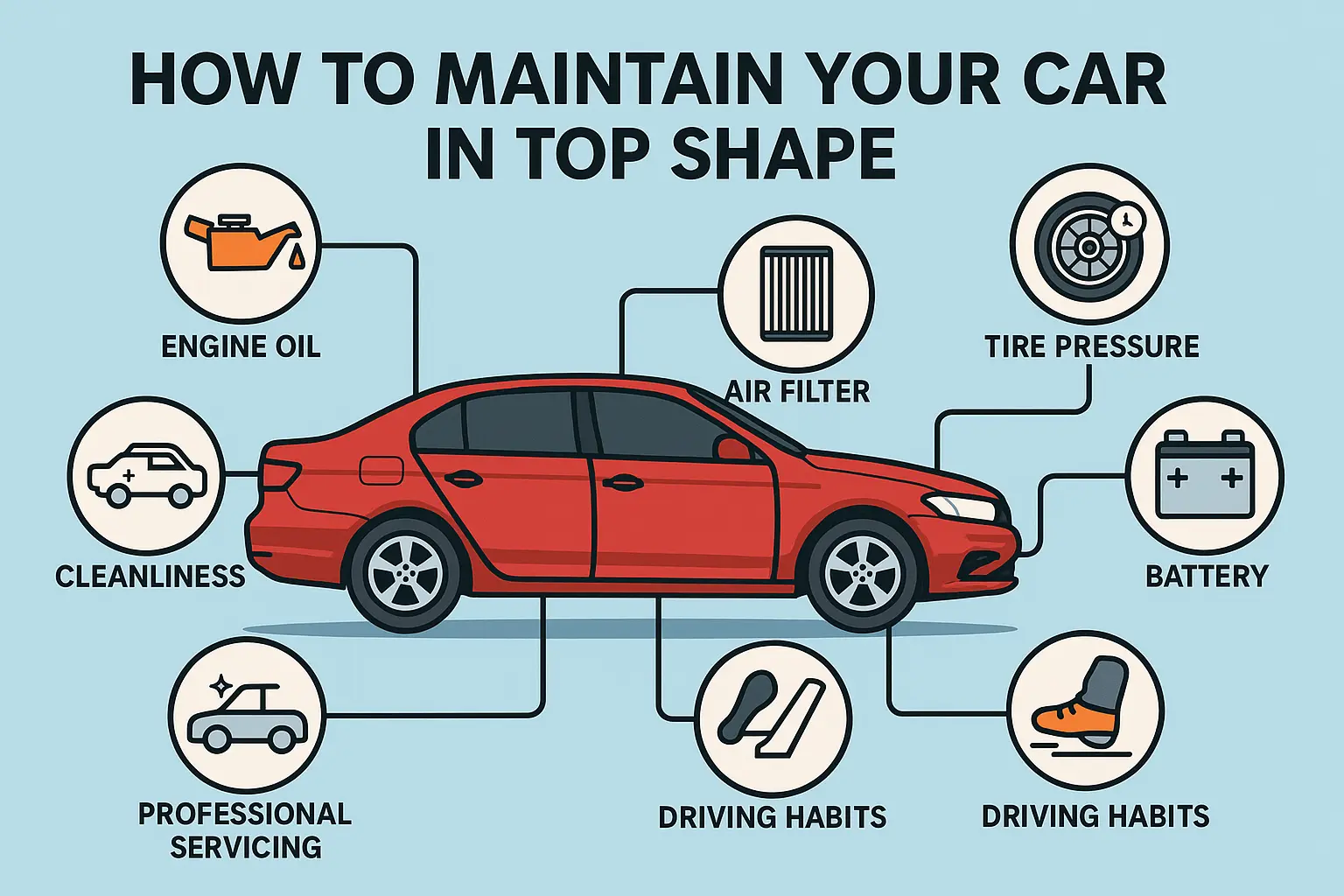Keeping your car in excellent condition is not just about aesthetics it directly impacts performance, safety, and resale value. With regular care and attention, you can extend your car’s lifespan and enjoy a smoother driving experience. Here’s a practical guide to maintaining your car in top shape.
Regular Engine Maintenance
The engine is the heart of your vehicle. Taking care of it ensures reliable performance.
- Change Engine Oil: Replace engine oil at regular intervals as recommended in your owner’s manual. Fresh oil reduces friction and prevents wear.
- Inspect the Air Filter: A clean air filter ensures proper airflow and improves fuel efficiency. Check it every 10,000 to 15,000 km.
- Spark Plugs: Replace spark plugs when needed to avoid engine misfires and rough idling.
Keep Your Tires in Check
Tires directly affect safety and fuel efficiency.
- Monitor Tire Pressure: Under-inflated tires increase fuel consumption and reduce tire life. Check tire pressure monthly.
- Rotate Tires: Rotating your tires every 5,000 to 8,000 km promotes even tread wear.
- Check Wheel Alignment: Misalignment can lead to uneven tire wear and affect handling.
Check All Fluids
Your car relies on various fluids to operate smoothly.
- Coolant: Prevents engine overheating. Top up or flush the coolant as needed.
- Brake Fluid: Essential for safe braking. Replace it every 2 years or as advised.
- Transmission Fluid: Keeps the gearbox working efficiently. Check its level and quality regularly.
Battery Maintenance
The battery powers your vehicle’s electronics and ignition system.
- Clean Terminals: Corrosion on battery terminals can cause starting issues. Clean them regularly.
- Check Battery Health: Have the battery checked during routine servicing, especially before long trips or in winter.
Adopt Smart Driving Habits
How you drive significantly impacts your car’s condition.
- Avoid Rapid Acceleration and Braking: Gentle driving reduces stress on engine, brakes, and transmission.
- Don’t Overload the Vehicle: Excess weight puts additional pressure on brakes, suspension, and engine.
Prepare for Seasonal Changes
Different seasons pose different challenges for your vehicle.
- Summer: Ensure your coolant levels are correct, and check the air-conditioning system.
- Winter: Use winter-grade oil and inspect the battery and tires for better grip and cold resistance.
Clean and Protect Your Vehicle
Keeping your car clean enhances its appearance and prevents long-term damage.
- Wash Regularly: Dirt and grime can lead to rust. Clean your car weekly, especially during monsoons or after long drives.
- Interior Care: Vacuum the cabin and wipe down surfaces to maintain a fresh and clean interior.
Read More: 2025 Kia Carens Clavis Review – 8 Pros and 8 Cons Explained
Stick to the Service Schedule
Follow the manufacturer’s maintenance schedule for inspections and servicing. Always go to authorized service centers and keep a record of all maintenance tasks. This not only helps in tracking work done but also boosts resale value.
FAQs
1. How often should I change my engine oil?
Every 5,000 to 10,000 km, or as specified in your car’s manual.
2. Why is tire rotation necessary?
It helps in even tread wear, improving tire lifespan and vehicle handling.
3. What happens if I neglect brake fluid replacement?
Old brake fluid can absorb moisture, leading to brake failure or reduced braking performance.
4. How can I tell if my car battery is weak?
Signs include slow engine crank, dim lights, and dashboard warning lights.
5. Do I need to service my car if I don’t drive it much?
Yes, fluids degrade over time, and regular servicing prevents issues from building up.
Read More:Tata Harrier EV Set to Launch Soon: What to ExpectA New Chapter in Tata’s Electric Journey
